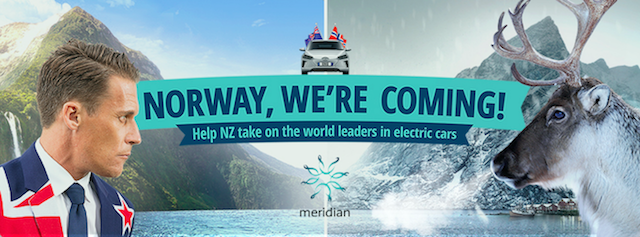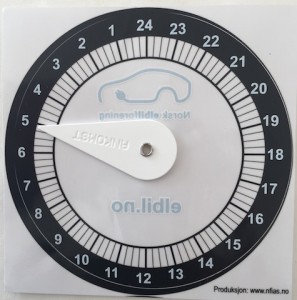
The electric vehicle (EV) lobby often refers to Norway and its abundance of eco-friendly, hydro-electric energy as the guiding light to New Zealand’s emissions-free motoring future. Christina Bu (above) is the secretary-general of the Norwegian Electric Vehicle Association (NEVA), the most powerful EV owners group in the world. Alastair Sloane caught up with her at her office in Oslo.
If Norway can grow its EV fleet, so too can New Zealand, says TV One television host Jeremy Wells, the face of a TV ad for Meridian Energy, the largest of the country’s electricity suppliers.
The ‘Let’s take on Norway’ ad urges Kiwis to do what Norwegians are doing: getting into plug-in EVs to cut harmful transport emissions.
Norway and New Zealand have a couple of energy things in common: clean, renewable electricity from hydro-power production.
Christina keeps an eye on what is happening here: she was an exchange student for a year at Tauranga Girls’ College in the late 1990s and returned a couple of years ago as a guest speaker at an EV conference in Wellington.
“What I found interesting was that New Zealand can increase its electricity energy production a lot,” she says. “The problem is that, unlike Norway, it cannot export it anywhere.”
New Zealand produces upwards of 80 per cent of its electricity from hydro stations. Norway produces 95 per cent from hydro, 3 per cent from wind, and 2 per cent from natural gas.
In short, Norway is 98 per cent self-sufficient in energy. Gas-fired plants are to be phased out within the next couple of years.
“Soon we will be 100 per cent self-sufficient and will probably have an excess (of electricity) to export to other markets,” says Christina.
“There are plans to build electricity cables to neighbours Denmark and Sweden. to get more of an working energy market.
“Norway is sort of a big battery. We can sell the hydro energy to Europe for high prices and import it back when prices are low. “
The next significant eco-friendly step for Norway after self-sufficiency is in 2025, when a planned ban on new vehicles with internal combustion engines is due.
By then the New Zealand EV lobby would like a fleet of over 100,000 units, up from the 2022 target set by the previous National Government of 62,000.
So how are we doing so far? BEVs are battery-electric cars, like the Tesla Model S and Nissan Leaf. PHEVs are plug-in petrol-electric hybrids, like the Toyota Prius Prime. Here are the numbers at the end of June this year:
- New Zealand had about 9600 registered EVs, including PHEVs.
- Norway had 253,097 registered EVs, made up of 163,532 BEV passenger cars; 83,940 PHEV passenger cars; 1412 four-wheeled BEV bikes, 4216 BEV light vans and trucks.
Norway relies on income from its huge gas and oil reserves to promote through government subsidies and incentives the take-up of EVs. These will eventually be phased out. There are no such attractive lures in New Zealand.
Nor is there a body like NEVA, also the world’s largest EV owners’ group with upwards of 50,000 members. “People seem to miss that we are actually an owner association,” says Christina.
“I always need to stress that. We are not an EV industry organisation. It’s different to a lot of other countries.
“They have people working in academia, or industry that are working on EV adoption, but here we represent the owners.
“That is the reason why we are quite popular because a lot of the car producers see the value of talking to us because we have the knowledge of how people think and how they experience EVs.
“We are definitely a lobby group. We put a lot of resources on political and media work. We do a lot of work in Norwegian politics.
“We are used as a fact-based guide by government agencies. They use us a lot. Although we are far ahead of the rest of the world, there is a lot of new knowledge that is not easy to find.”
NEVA membership costs NZ$80 a year. It has launched an app for its members, complete with, among other aids, route planner, distance calculator and guide to the country’s charging stations.
“We try to add as much value as possible to make people want to continue to be a member,” says Christina. “Our main focus is increasing the value of membership.
“We help our members get good membership deals. Like the special insurance rates for BEVs we did with one of the biggest insurance companies in Norway.”
Another bonus for NEVA members is the 24-hour, clock-like disc pictured above. It allows BEV drivers to park free in metered parking spaces pretty much anywhere in Norway.
Just point the arrow at how long you expect to park for, and you’re good to go. Abuse it and you get a written warning. Continue to abuse it and the wallopers who monitor such abuses will hit you with a hefty fine.


